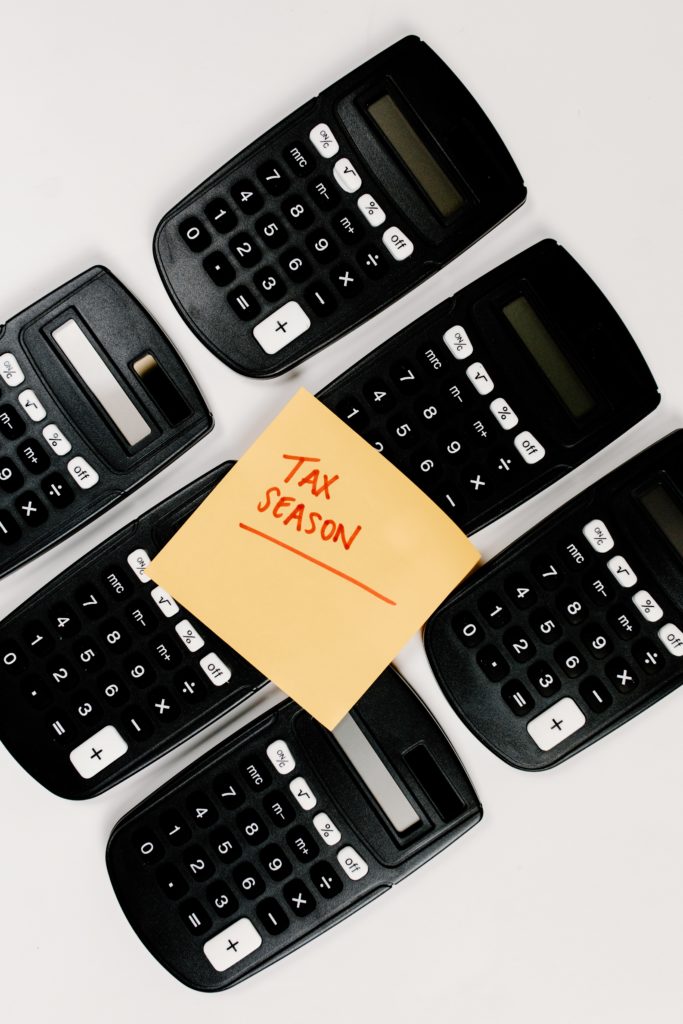You may not be thinking about filing your tax return right now, but you should be thinking about making your tax-deferred and/or tax-free contributions to your Solo 401k. With that in mind, you are probably also thinking about what is involved with filing for those tax savings when tax time does come around. Here we answer the questions that you have about your tax return so that you have full confidence that today’s and tomorrow’s contributions will maximize your tax savings.
Important Solo 401k Tax Filing Deadlines in 2023 (for 2022 Taxes)
Although your mind is probably on Solo 401k contribution deadlines, those deadlines are driven by the tax filing deadlines — which makes these dates a good place to start working on final planning for 2022 contributions.
If you have not yet opened your Solo 401k, now is the time to do it so that you’ll have ample time to plan and fund your contributions before you feel pressured by contribution and tax filing deadlines. December 31, 2022, is the deadline to open your Solo 401k, although you’ll be able to make your 2022 contributions well into 2023. Of course, the hectic holiday season will be upon us faster than we realize, so the December 31 deadline is approaching fast. Opening your Solo 401k account today will give you breathing room to make your contributions that can be made after December 31. However, December 31 is an absolute deadline to open your account if you want the 2022 contribution tax benefits.
If you already have an active Solo 401k, you still have plenty of time to make contributions that will be reported in 2023 on your 2022 tax return. But we all know how deadlines have a way of creeping up on us unexpectedly. Now might be a suitable time to plan your annual contributions if you haven’t done so already.

For sole proprietors, single-member LLCs, and C-corporations, in 2023, April 15th (traditional tax day) will fall on a Saturday. That means for 2023, the last date for filing your federal taxes falls on April 17. It is also one of the Solo 401k contribution deadlines for those business types.
For S-Corporations and partnership LLCs, the tax filing deadline is Wednesday, March 15, 2023. It is also one of the Solo 401k contribution deadlines for those business types.
If you need more time to file or more time to fully fund your Solo 401k, you may be able to get a tax deadline extension. You must request an extension on or before the regular filing deadline. If you get a tax extension, the filing deadline changes to the following:
- Sole proprietorships: October 16, 2023.
- Partnerships: September 15, 2023.
- Multimember LLCs: September 15, 2023.
- S-corporations: September 15, 2023.
- C-corporations: October 16, 2023.
Keep those dates in mind because you can use all that time to fully contribute to your Solo 401k for the 2022 tax year.
Important Solo 401k Contribution Deadlines for 2022 and 2023
Although December 31, 2022, is not a deadline for contributions, January 31, 2023, does have important accounting implications for contributions. This is because W-2 forms must be filed by January 31, and these include the employee contributions that apply to 2022. As a result, you should make your employee contributions by January 31, 2023, or you should decide the amount you will contribute so that you can file an accurate W-2 by January 31, 2023. If you have not yet made the employee contribution, you will have until the federal tax filing dates (including extensions) to make both the employee and employer contributions.
The dollars are huge when you take full advantage of contributions to a Solo 401k plan. In 2022, employees of a business with a Solo 401k can contribute up to $20,500 per year. This is a $1,000 increase over 2021. But that is only part of the contribution story. There is also the catch-up contribution of $6,500. This is for people that are at least 50 years old. And… when you include the employer (profit sharing) portion, the total contribution limit rises to $61,000 or $67,500 if age 50 or over in 2022. Now… double that for a spouse for a whopping $122,000 or $135,000 if both are at least 50 years old.
So how much more time do you have to maximize your tax-advantaged contributions?…
Another crucial point that you want to take away from this article is how to stretch out your ability to make 2022 contributions all the way into the fall of 2023. As long as you open a Solo 401k by December 31, 2022, you have until your income taxes are filed to fully fund your retirement account.
You can make your contributions either periodically or in one lump sum. This is another level of flexibility that you gain when you have full control of your retirement account with a Solo 401k. Unlike contributing to a corporate employer’s 401k that takes money out of each of your paychecks, with a Solo 401k, you decide when to make the contributions. You can make regular contributions based on your business cash flow, seasonal cash flow, make one big lump sum contribution before the deadline, or in any increments that you prefer.
Contribution Deadlines

The important dates that you want to mark on your calendar that involve the Solo 401k deadlines for 2022 contributions start with:
- March 15, 2023, is the Solo 401k contribution deadline for S-Corporations and partnership LLCs.
- April 17, 2023, is the Solo 401k contribution deadline for sole proprietors, single-member LLCs, and C-corporations.
Those are also the tax return filing deadlines for those business types.
Both of those dates (March 15th and April 17th) are also the deadlines to file for a six-month extension that also allows extensions to the Solo 401k contribution deadlines. The respective extensions are until September 15, 2023, and October 16, 2023. Here is an easy-to-read bullet list of final contribution dates to your Solo 401k that will be tax-deductible for the 2022 tax year based on an extension:
- Sole proprietorships: October 16, 2023.
- Partnerships: September 15, 2023.
- Multimember LLCs: September 15, 2023.
- S-corporations: September 15, 2023.
- C-corporations: October 16, 2023.
If you need more time to complete your 2022 federal returns, you can request an extension by filing Form 4868 through your tax professional, tax software, or using the Free File link on IRS.gov. What you need to keep in mind is that filing for an extension does not grant an extension of time to pay taxes that were previously due. You need to pay the federal income tax due by March 15 or April 17, to avoid interest and penalties. Most state income taxes follow federal tax deadlines, but it is always best to check with your particular state.
Solo 401k contributions are a powerhouse in your retirement plan for many reasons:
- Contributions can be tax deductible. This can result in paying fewer taxes on the money you’ve earned this year.
- Contributions can be Roth, allowing your investments to grow tax-free.
- High contribution limits for a Solo 401k plan can help you supercharge aggressive wealth growth.
Understanding the Two Tax Deductions for Solo 401k Contributions
You are your own boss. As the business owner, you act in both capacities regarding a Solo 401k plan — as both employee and employer. You make both contribution types — employee and employer. You also get both tax advantages – deferred income and business expense. It also means making two distinct tax calculations.
Calculation 1 determines the net earnings for your business. Calculation 2 determines how many tax-exempt contributions you can make to your Solo 401k. Although these are separate calculations, they are dependent on each other. Think of it this way. You make your own retirement contribution. Your employer (your business) makes a separate retirement contribution to your personal retirement account.
Here is how to report contributions for pass-through business entities (sole proprietorships, partnerships, limited liability companies).
Employee contributions (aka elective deferrals) are up to 100% of net earnings from self-employment income and/or up to the annual contribution limit. If your business is a pass-through structure, you submit both contributions to the IRS on your personal tax return. For these businesses, your income is calculated using Schedule C. Report the employer and employee contribution to your Solo 401k on Schedule 1, line 15 of the IRS tax form 1040.
Important note: you do not report the employee portion of the Solo 401k contribution on Schedule C. The purpose of Schedule C is to calculate your business expenses before determining your earned income from the business.

Employer contributions. There is a direct connection from Schedule C to Schedule 1. For example, you report business (earned income) from Schedule C on line 3 of Schedule 1. Then, as part of the Schedule 1 calculation, the employer contribution to your Solo 401k becomes part of your adjusted income. Afterward, that is subtracted from your taxable income. Finally, report adjusted income on line 8a of Schedule 1 on your 1040 form (see line 8b subtraction calculation).
Always have your CPA or tax preparer check your calculations. Your CPA is the most qualified person to guide you on where to claim your Solo 401k contributions on your tax return. The IRS provides this example for calculating your self-employed retirement plan contributions and deductions.
Here is how to report contributions for an S-Corporation. If your business income and contributions do not pass directly to your personal income tax return, there is a different tax reporting process that requires different tax forms.
Most, but not all, corporations are separate business entities. Therefore, they do not allow earned income to pass directly through to your personal income tax return. An important exception is S-corporations. For an S-corp, business income does pass through to owners/shareholders. You’ll then report that income to the IRS as taxable but take the Solo 401k tax deductions on your personal tax return. S-corporations also have other tax obligations as corporate entities. This requires the S-corporation to file a tax return separate from the business owners.
What Contribution Which Deduction
Employee contributions. This is straightforward for anyone that has received a W-2. The company that you own provides you a W-2. IRS Form W-2 documents your wages earned. As an employee of the corporation, report your personal contribution to the Solo 401k in box 12 of your W-2. Box 12 can contain several types of compensation or reductions from your taxable income. The IRS identifies different categories of compensation and reductions with different single or double letter codes. The single letter code for a 401k deduction is “D.” Your salary-reducing portion of the Solo 401k contribution has already been subtracted from your taxable amount that appears in box 1 of your W-2.
Employer contributions. Form 1120S, line 17 = Employer contribution.
Again, always work with your CPA or tax advisor to ensure the contributions are calculated and shown properly on your tax return.
Roth contributions are different. Remember Roth contributions are after-tax. Therefore, they aren’t listed on your personal or business tax return. Yes, it might seem counterintuitive to put money in a retirement plan and not claim it anywhere. However, you aren’t asking the government for a tax deduction for these contributions. As such, they aren’t listed anywhere specifically on your tax return. What you are getting with Roth contributions is the ability to grow the earnings tax-free. As long as the contributions are made to a qualified Roth Solo 401k, the distributions that you take at retirement will all be tax-free.
Filing IRS Form 5500-EZ for Your Solo 401k

Generally, your Solo 401k does not have to file a return with the IRS if the total assets in your Solo 401k are worth less than $250,000. Only if, at the end of the year, your Solo 401k is worth more than $250,000 do you need to file Form 5500-EZ. The filing deadline is July 31.
You can easily complete a paper Form 5500-EZ and postal mail it to the IRS. The IRS also has an online fillable form on its website you can complete and print out. You need only provide some very basic information about your plan, such as identifying information, total plan assets and liabilities, and whether the plan has made any loans to you.
Setup Your Solo 401k Today
Others imitate, but as the #1 Solo 401k provider, we innovate. You can be a freelancer, independent contractor, or small business owner. Your business can be structured as a sole proprietorship or a formally structured LLC, C Corp, or S Corp. All of these meet the IRS qualifications for a Solo 401k as long as there are no outside full-time employees in any business owned by you and/or your spouse.
Book a free call with one of our experts now to learn your options and discuss what is best for you!
The Solo 401k from Nabers Group provides more investment options, the highest contribution limits, and the lowest fees of any fully self-directed retirement plan.
Signup by following the link or call us at 877-SOLO-401K (877-765-6401).





